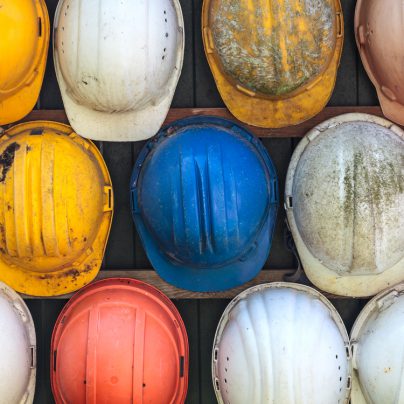The question of stereotyping in the construction industry is hard to answer – particularly where women are concerned. According to figures quoted by the UCATT union, just one per cent of workers on site are women.
Giving their rarity it is little surprise that stereotypes prevail – most male workers never see a woman on site for their entire working lives.
Many still believe that women are smaller and weaker than men – which means that they must also be less productive. Where this prejudice remains, women are actively discouraged from taking roles on construction sites.
Ignorance fuels inequality
This ignorance makes it hard for women to achieve equality with their male colleagues. Average wages are 12% lower for women carrying out the same roles as their counterparts for instance.
Unsurprisingly, more than half believe they are treated worse at work simply because of their gender. Because there are fewer women on site, many feel isolated – particularly if stereotypes affect the way that their male colleagues relate to them. They also note a distinct lack of opportunities for promotion.
Potentially dangerous outcomes
Feelings of isolation and workplace dissatisfaction may fuel mental illnesses like depression and anxiety
The long term health implications of these conditions can be devastating – and may explain why women working in construction tend to leave the industry within five years.
A lack of women on site also means that the industry is unprepared to protect them. 15% of women are unable to source properly fitted PPE. As well as increasing the risk of injury, employers may also be liable for failing to properly protect their workers.
Poorly equipped or trained employees also present a significant risk to their colleagues. As accidents and errors increase on site, the stereotypes associated with female construction workers are reinforced – even though the employee themselves is not entirely at fault.
The “poor woman” stereotype becomes a self-fulfilling prophecy.
An issue that needs to be addressed
Whether employers are willing to admit to gender stereotypes on construction sites or not, the reality is that they must strive to increase equality. According to the TUC, the number of women entering construction-based apprenticeships has been steadily growing over the last decade.
This means that the number of women entering the construction industry will grow. The actual number may continue to be relatively small, but the chances of having female labourers and tradespersons on site will also increase.
Employers need to take a number of preparatory steps – even if they do not currently employ any women:
- Consider gender awareness training for managers, helping them identify and stop sexist behaviour on site.
- Implement a standard wage for male and female employees based on skills.
- Introduce a promotion program based on ability and skills.
- Identify vendors who can provide female-friendly PPE equipment that fits properly for maximum protection.
For more help and advice on building procedures to better protect women on your sites, please get in touch.
Now it’s your turn
Have your say in the comments section below.
Don’t miss a thing
We hope you found this article useful.
If you did, you’ll be pleased to know that we provide helpful how-to articles and practical advice for you to digest, a few times a month on Veritas Consulting Blog.
You can have new articles delivered straight to your inbox. Just add your email below.
You will find no better resource to help make your health and safety as simple as it needs to be.
We will respect your privacy.



One Comment
Wow! This Blog is Really Very nice and also informative about OHSAS Safety Audit and Health and Safety Training